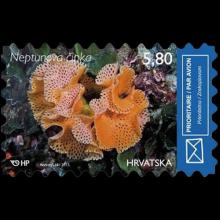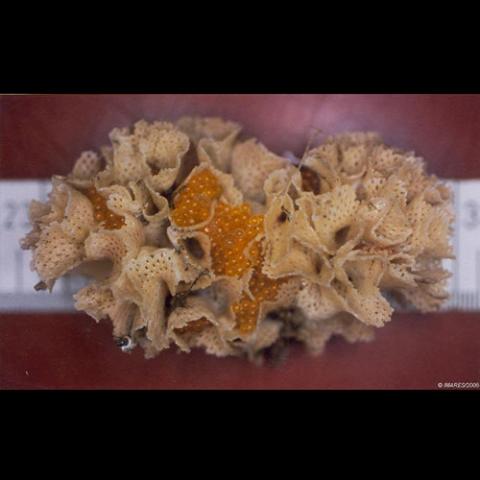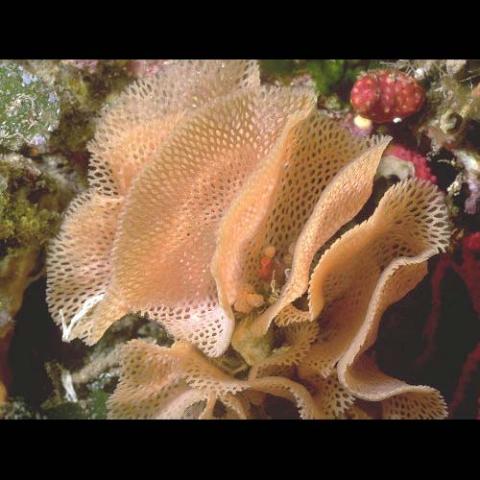NAMES
TAXONOMY
Croatia
Issued:
Stamp:
Reteporella beaniana
Croatia
Issued:
Stamp:
Reteporella beaniana
Croatia
Issued:
Stamp:
Reteporella beaniana
Genus species (Animalia): Reteporella beaniana
Reteporella beaniana (Neptune's Lace) is a a species in the family Phidoloporidae within the bryozoan order Cheilostomatida. The colonies of many genera grow in an upright, reticulate branching manner, which gave rise to one colloquial name for this group as 'lace corals'. Zooids generally open on one side of the branches.
Characteristics
This is a colonial species. It builds white or pink colonies with the shape of a cup, a tree or a folded sheet. It rarely grow larger than 3 cm of height and 5 cm wide. Sea slugs and sea spiders are often seen grazing on the Reteporella beaniana.
Habitat
There are three species of Reteporella spp. living along the coast of Norway. They usually cannot be identified from photography alone. They prefer hard substrate and current exposed locations, usually deeper than 20 meters. Bryozoa are tiny microscopic celled animals that live in a soft membranous cell in colonies that could be just a few or a few million in size. Tiny tentacles protrude form an opening to catch plankton. Some colonies can be 1mm in height as flat sheets while others resemble plant or coral and are often mistaken as such.
Distribution
It is registered along the Atlantic coasts of Europe, from Spain to Norway.
References: eol.org , fredmhaynes.com, seawater.no,whatsthatfish.com
Photo: imares2006



